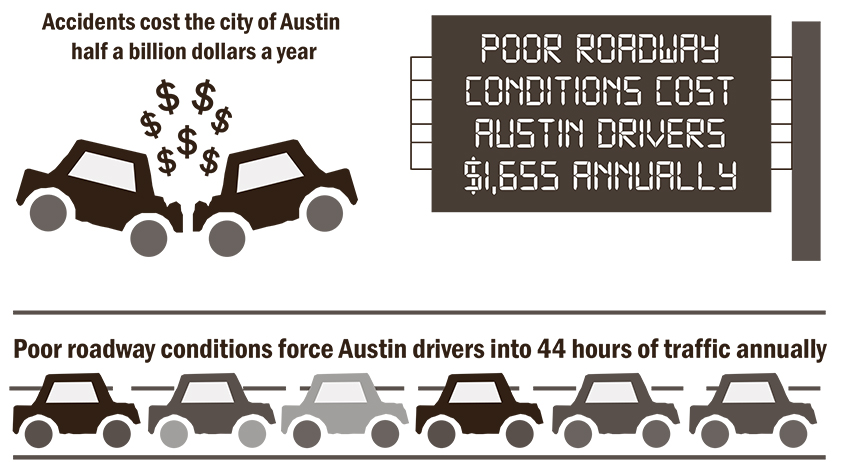Austin’s heavy traffic problems are hardly addressed well. To ease traffic for President Obama’s visit at the start of South By Southwest, non-essential City employees were allowed to leave work early, and Austin Independent School District cut the school day short. However, we cannot keep people off the roads forever in the fastest growing city in the United States. But Austin has potential. Current proposals to integrate technology into the city’s transportation infrastructure offer a promising solution to Austin’s chronic traffic troubles.
Austin was named a finalist for the U.S. Department of Transportation’s Smart City Challenge at the same festival that caused so much traffic in Austin. The program pledges up to $40 million to one city with the potential to integrate technology into its transportation network. Some of Austin’s proposals include integrating self-driving cars, increasing the number of electric vehicles and implementing more transportation options for commuters.
These proposals are a positive break from past policies. Despite constant approval from voters, pouring money into ambiguous road projects will not address the city’s central traffic problems. Past projects have devoted millions to “improvements,” but there’s only so much room for roads to expand as the city’s population continues to grow. Even if more roads are built, studies show this would only increase the number of drivers on the roads. Road repairs are necessary, but devoting money to roads alone will not suddenly solve traffic problems.
Utilizing technology, however, is Austin’s strength. In February, Austin was ranked the top city for high-tech transportation options such as bike- and car-sharing systems and apps for tracking public transit. Austin recently partnered with Rocky Mountain Institute to create innovative traffic solutions. In August, Google selected Austin as a location to test its new self-driving cars. In a public statement, Austin Mayor Steve Adler said he believes in the importance of combining new technologies with current roadways.
“We really need to find the new technologies that are going to enable us to use our existing infrastructure smarter, in more innovative ways,” Adler said.
History freshman Daja Martinez said she is optimistic about implementing technology with Austin’s road infrastructure.
“I believe that technology that improves safety features or allows people to avoid accident-prone areas would definitely help the flow of traffic, especially in the technological age we are living in,” Martinez said.
In their current situation, Austin’s roadways are a red light for growth. Accidents cost the city half a billion dollars every year. Poor roadway conditions and traffic amount to about $1,655 a year for drivers in Austin. If road projects have not addressed Austin’s traffic for years, it’s time to develop another solution. Whether Austin wins the Smart City Challenge, implementing technological solutions is the road we should be driving down.
Dam is a linguistics and Spanish freshman from Dallas. Follow him on Twitter @daviddamwrite.





















